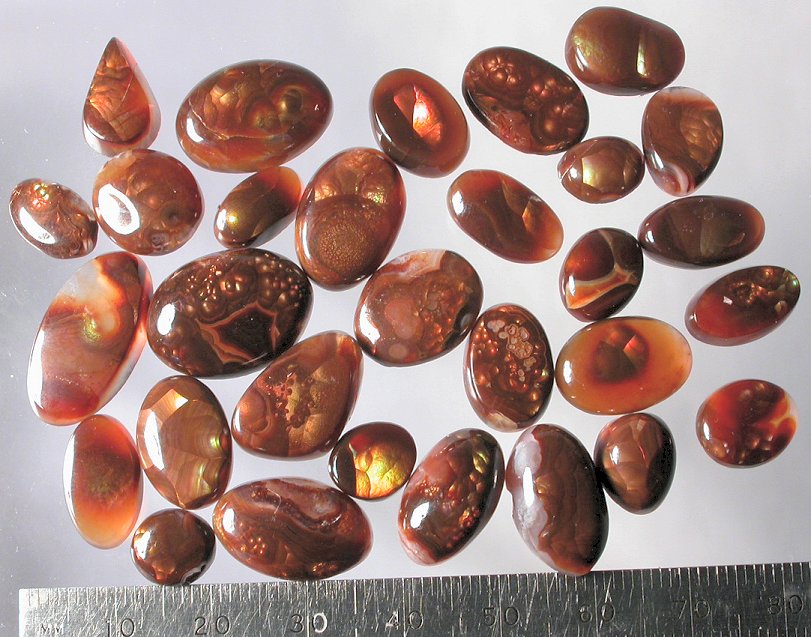
Types Of Agate
Types Of Agate
Agate is a beautiful mineral that occurs in an amazing variety of colors, shapes and patterns. Agate is a unique stone that is part of the quartz family.
It is important to note that there are many types of Agate, in fact Agate types are created each year. They are mainly coined new terms for marketing purposes and can consist of the following names: Blue Lace Agate, Eye Agate, Irish Agate, Rainbow Agate and Snake Skin Agate, among many others.
Fortification Agate
This is the most common and distinctive type of agate. In these agates, bands crystallized into concentric layers that more or less follow the shape of the cavity. The banding resembles an aerial view of a fort.
Water-Line Agate (also called water-level or onyx)
During its formation, silica-rich solution either entered the cavity slowly laying one band at a time, excess water drained out leaving a small amount of silica to settle out into separate bands, or the vesicle filled under low pressure. In any case, the silica crystallization in water-level agates is controlled by gravity in one orientation, forming a stack up of parallel bands.
Shadow Agate
Some agates exhibit a shadow effect in which there is what appears to be movement across the agate layers when the specimen is rocked back and forth (or your orientation to the specimen moves). This optical effect only occurs when there are alternating translucent and opaque bands. It is caused when light goes into the agate, but is not reflected out.
Tube Agate
Tube Agate During the formation of some agates, parallel projections of tiny hair-thin mineral rods grow first within the silica gel, around which later the chalcedony agate micro-crystals form. In some cases the inclusions remain, but sometimes they weather away leaving hollow tubes that subsequently fill in with silica.
Eye Agates
This mysterious agate characteristic is believed to be formed when most of the silica gel drains from the cavity, leaving only a droplet that “beads up” on the inside wall of the cavity. This droplet crystallizes into solid chalcedony “eyes”. In some cases, crystal growth will continue from this droplet in a manner similar to the formation of stalactites in caves. Later, the pocket fills in with the usual deposition of chalcedony microcrystals.
Plume Agate
These agates initially had formations on their outside layer that formed prior to the deposition of chalcedony bands. They are filament growths of mineral inclusions that resemble ferns or feathers.
Geode Agate
Geode Agate In some cases the supply of silica-rich water runs out before the entire cavity fills in. When there is a hollow center within a crystalline outer fill, the specimen is considered a geode. Not all geodes have agate banding, but many do. Also, the inner layers can form into several different types of silica mineral crystals and may even have other types of mineral crystals.
Moss Agate
Moss Agate Moss agates have clusters of mineral inclusions that resemble plants, trees, or landscapes. Most moss agate inclusions are comprised of iron or manganese oxide. In some cases, the inclusions inhibit chalcedony banding allowing the mineral clusters free reign to grow within the silica gel.
Seam Agate
Seam agates for in cracks within host rock, rather than in rounder pockets. The bands form in parallel rows that follow and fill in the crack or seam.
These types of Agate are usually create into beautiful stones that are then placed on rings, as charms, bracelets, necklaces, brooches, dream catchers etc. Agate is very strong, resists acid and is an excellent stone to work with when it comes to jewelry. Agate is also used in beautiful mosaics and picture frames.
www.IndonesiaJewelry.com


